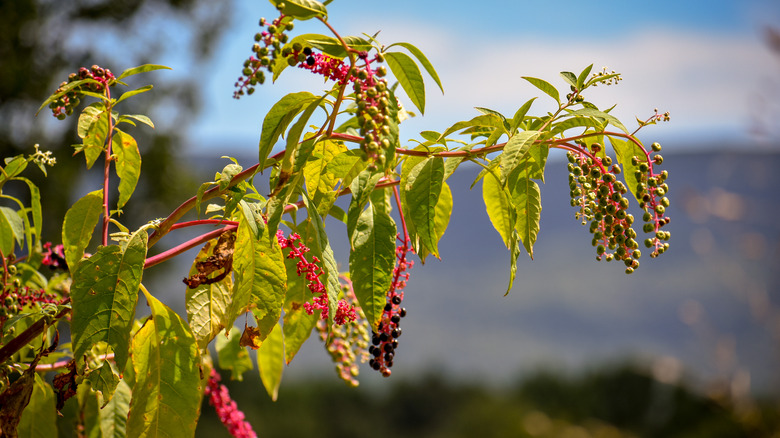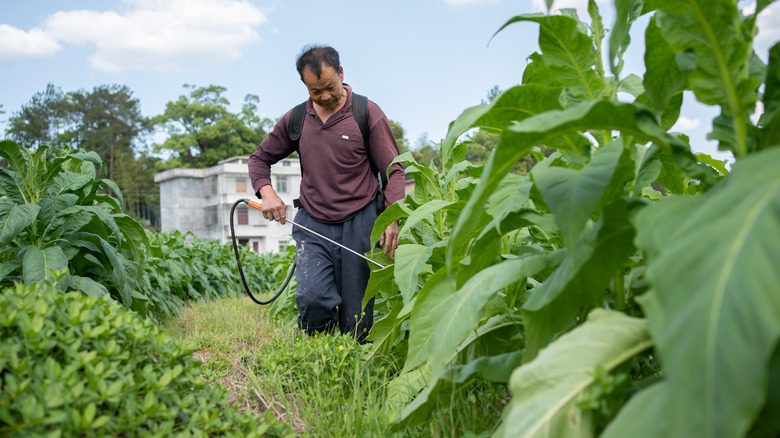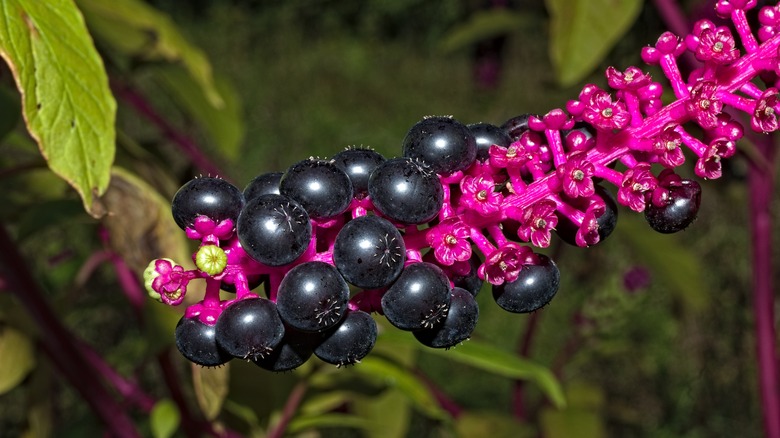The Toxic Perennial You Don't Want To See In Your Yard
Although some poisonous plants may look beautiful in your garden, you don't want to leave them in place, as you could put children or pets in danger of ingesting them. One such plant is pokeweed. It produces rich, purple-colored berries that look like clusters of grapes. However, eating a handful of these berries can make a child very sick. Though some people may cook the leaves, stems, and roots of the pokeweed for medicinal reasons, improper preparation of these parts of the plant can result in serious illness. The best option is to destroy this scary weed right away whenever you see it in your garden.
Pokeweed, also called pokeberry, is a weed that can pop up almost anywhere in the United States, aside from the southern and northern-most areas of the country. It can grow in almost any kind of soil, and it doesn't have a preference for sunny or shady areas. Pokeberry can grow to be between 6 and 10 feet in height, andits pink stem can be as large as 2 inches in diameter. Its dark purple berries are its defining characteristic, each measuring about ¼ inches in diameter.
How to eliminate the pokeweed plant from your garden
It can be challenging to eliminate the pokeberry weed, as it has a deep taproot that's difficult to completely dig out of the ground. This also makes it nearly impossible to pull this weed to eliminate it, as some of its root structure will break off and remain in the ground, allowing the noxious weed to grow back. Additionally, some types of birds can eat the berries safely, which causes them to spread the pokeweed's seeds in their feces, so it's best to kill the plant before or as soon as you see berries starting to form. Because of the challenges in simply pulling it, you probably will need to use a chemical pesticide to eliminate it. Glyphosate or dicamba usually are the most successful chemicals for killing pokeberry.
If you simply do not want to use weed-killing chemicals, you can try pulling the pokeberry plant by hand when it is very young. It won't have a deep taproot yet, which means you can eliminate most of it successfully. To discourage any remaining taproot from growing back, cover the area with a thick mulch layer or sheet of dark plastic to choke its access to sunlight. You can also cut it down to the stem when it's a larger plant as well, and smother its base and roots with plastic or mulch.
What could happen if you eat pokeweed berries?
If a child eats pokeweed berries, immediately call the Poison Control (1-800-222-1222) for help. You should rinse out the child's mouth with water. You also can give the child some milk or water to drink to dilute the toxicity of the berries in the stomach. In children, the berries can cause symptoms like stomach pain, nausea, vomiting, and diarrhea.
If an adult eats parts of the root or stem, or if a child has an unexpectedly significant reaction to eating a large number of berries, the symptoms could be far more serious,so seek medical help as soon as you can. Pokeweed also can cause illness in dogs and cats should they eat any part of the plant. However, the effects are generally mild, including excessive drooling and gastrointestinal irritation. The animal may refuse food after ingesting the plant. In a severe case, the pet may vomit, have diarrhea, or suffer tremors. Call your vet to determine next steps either way.


